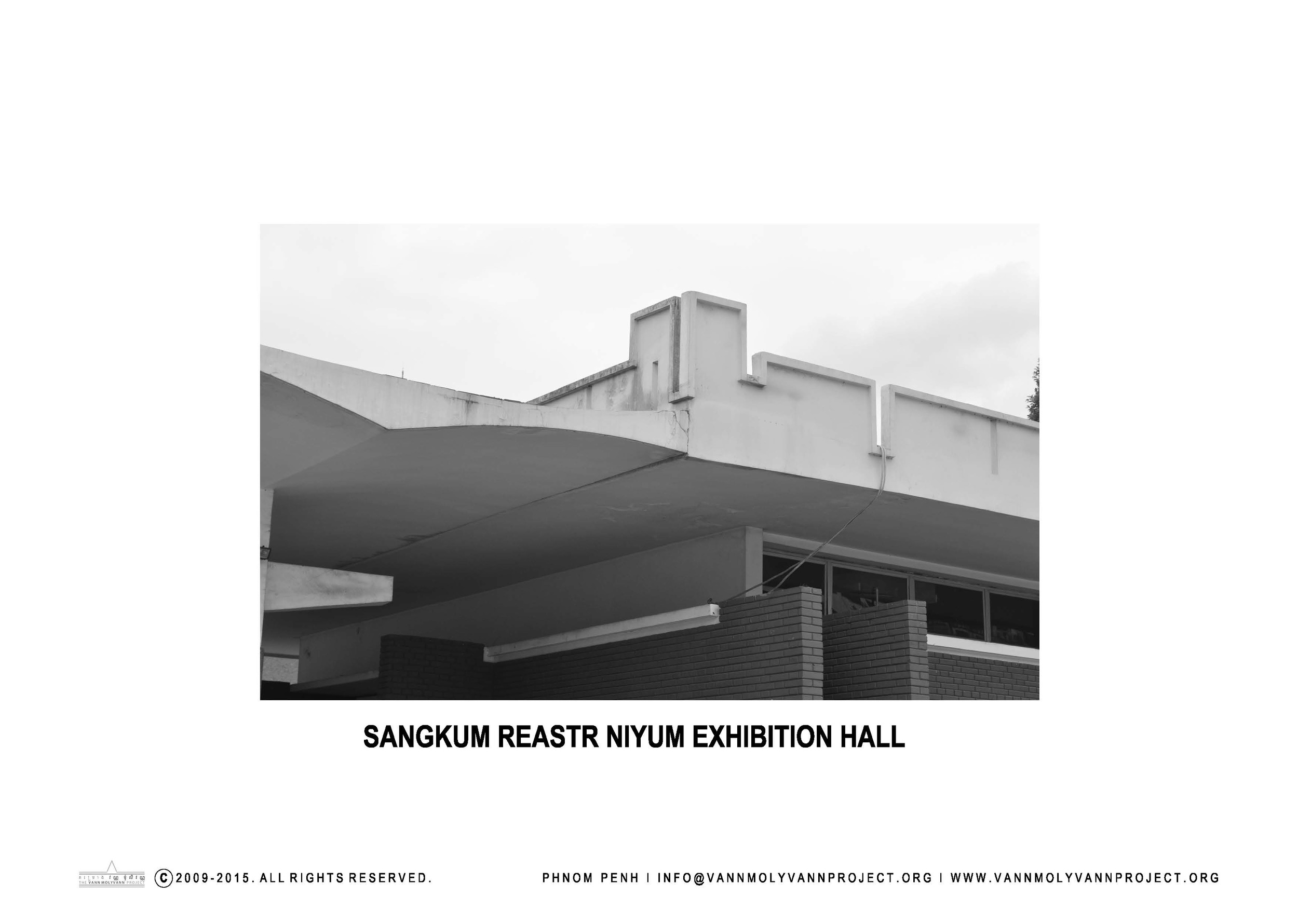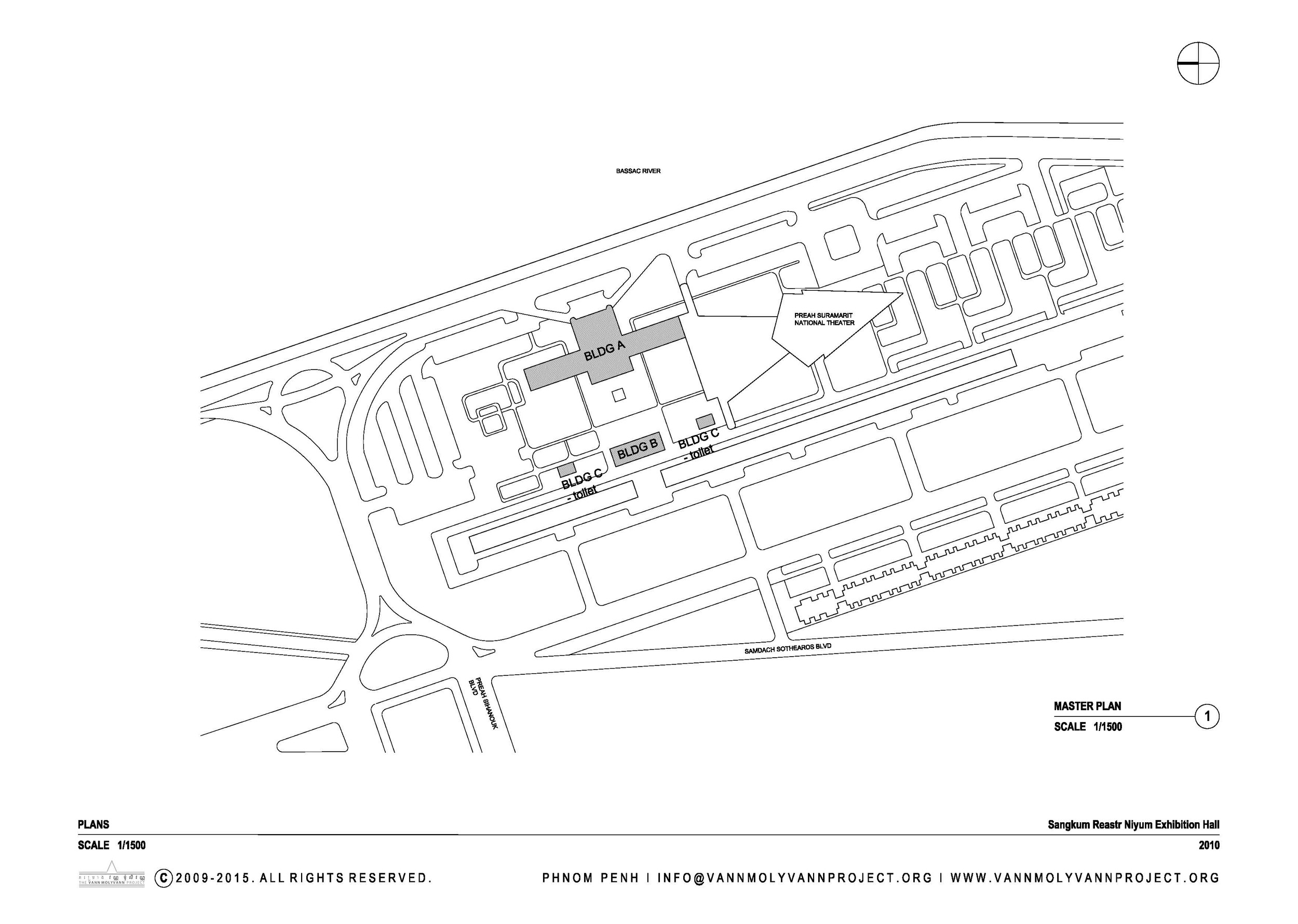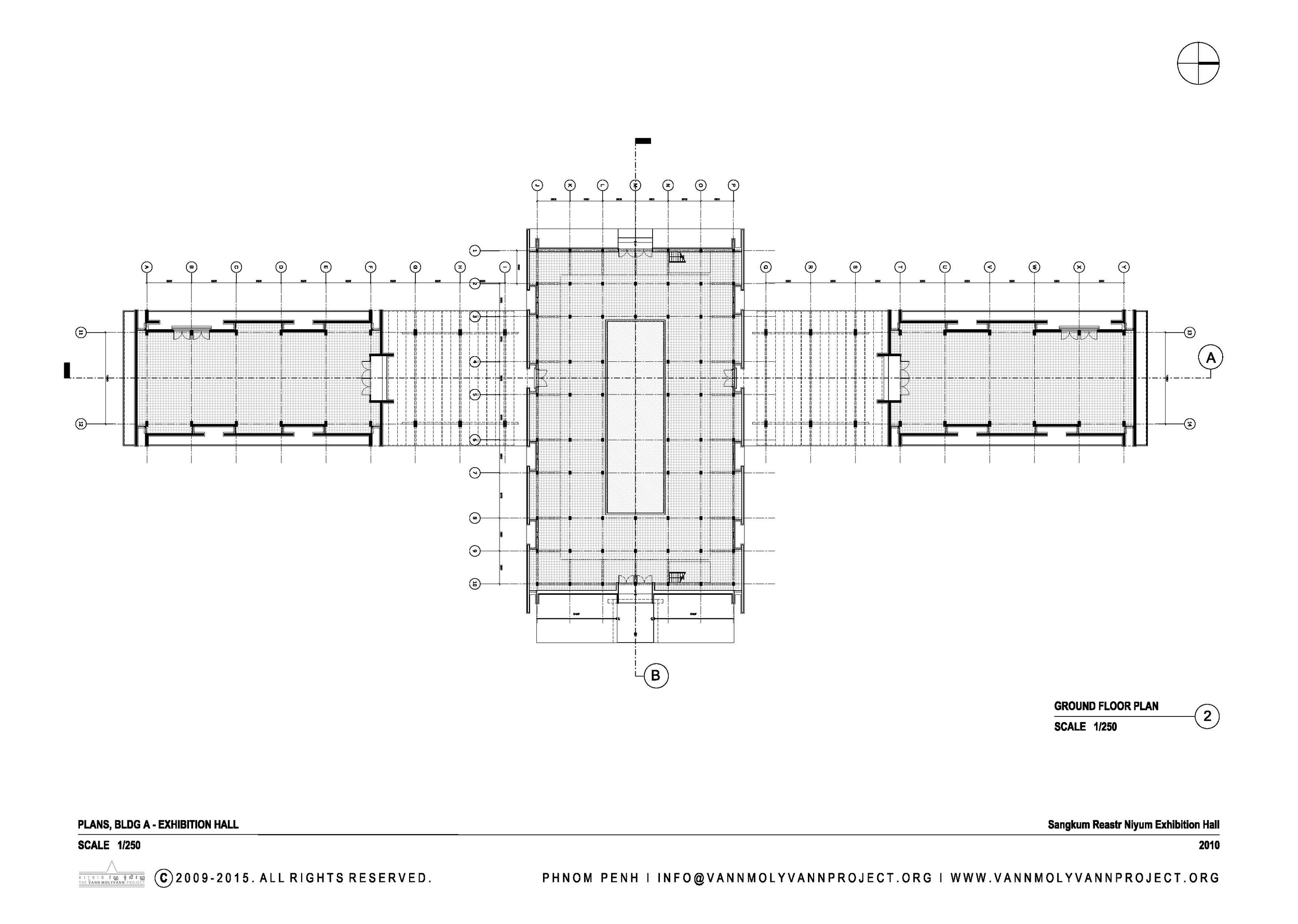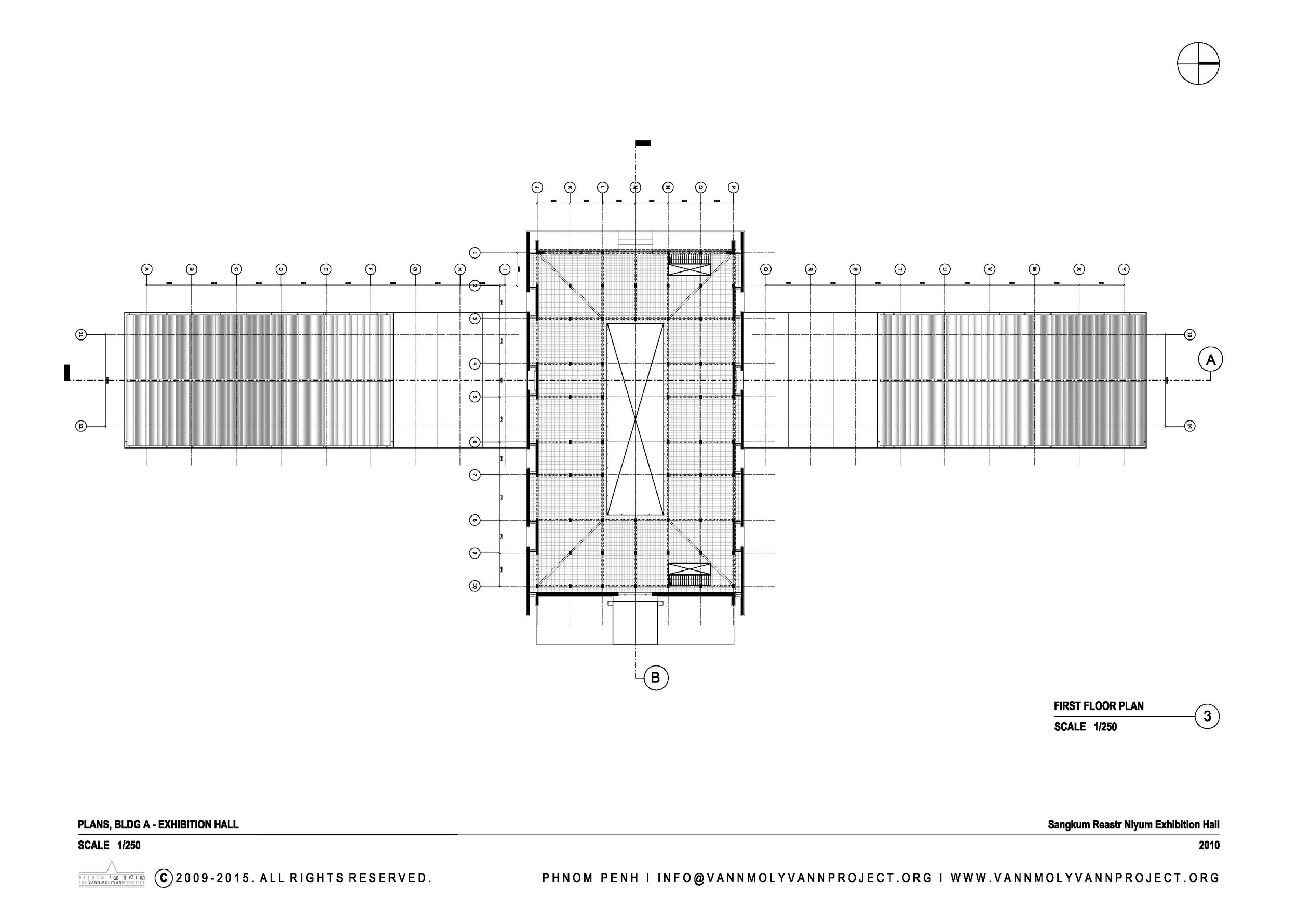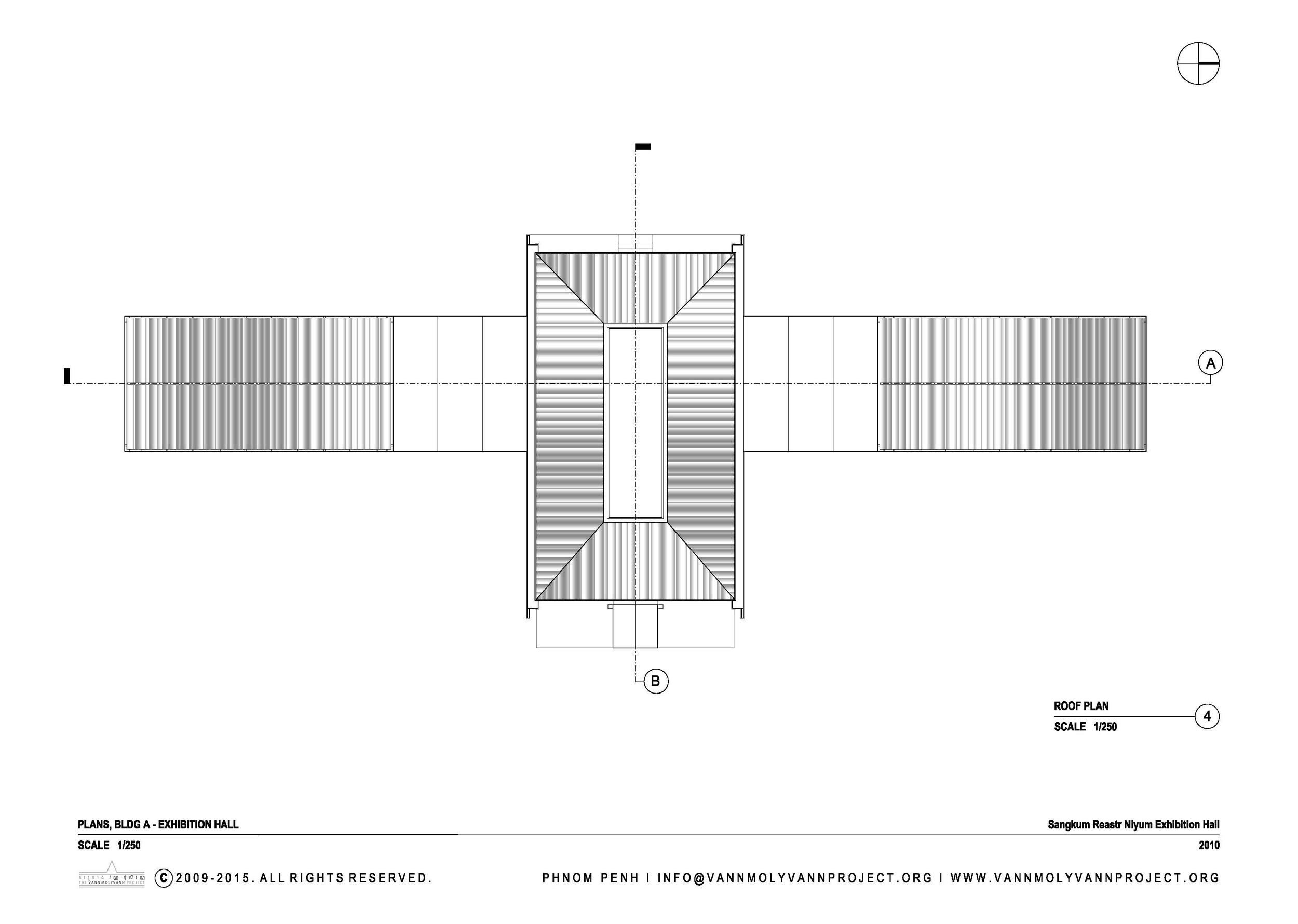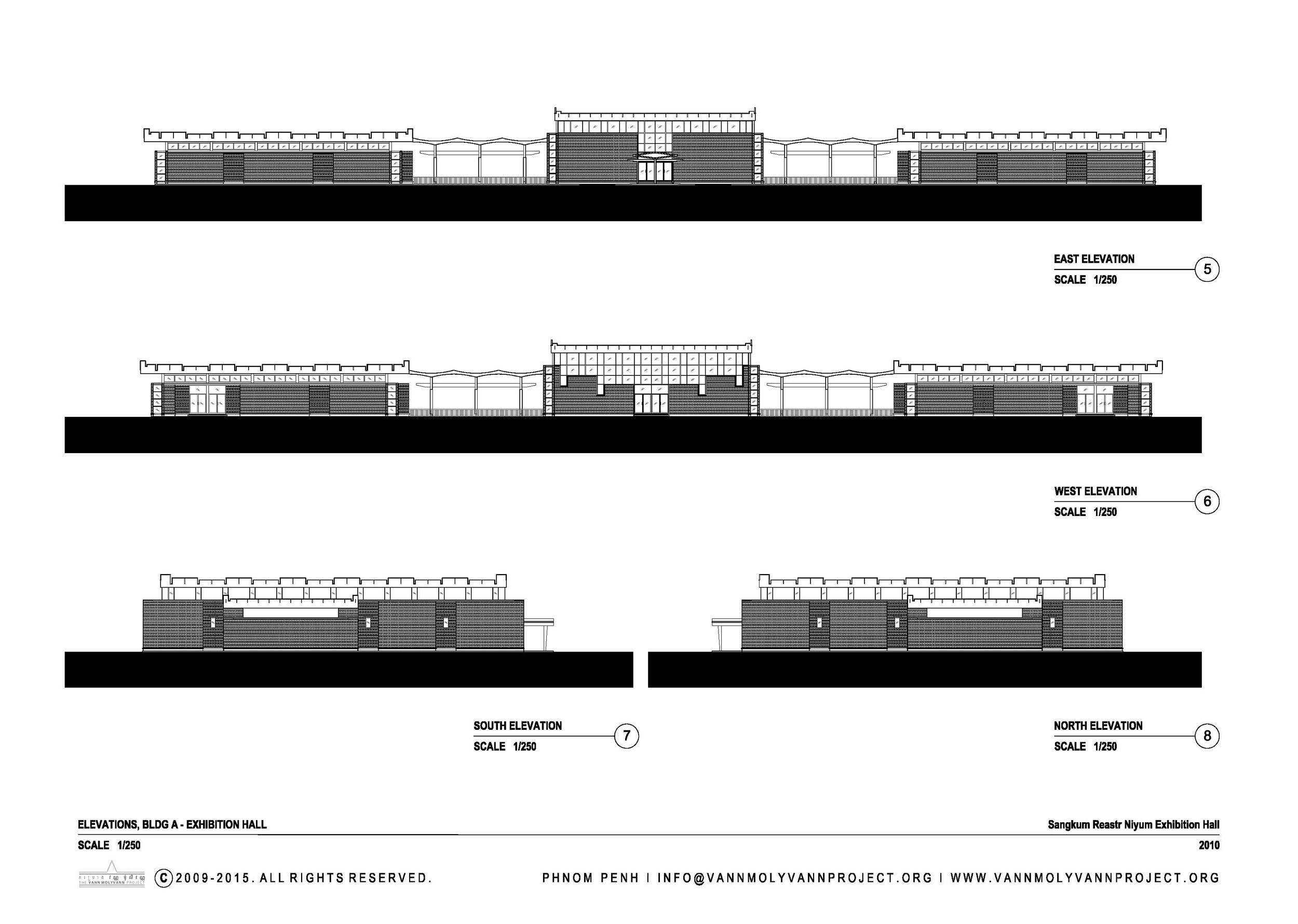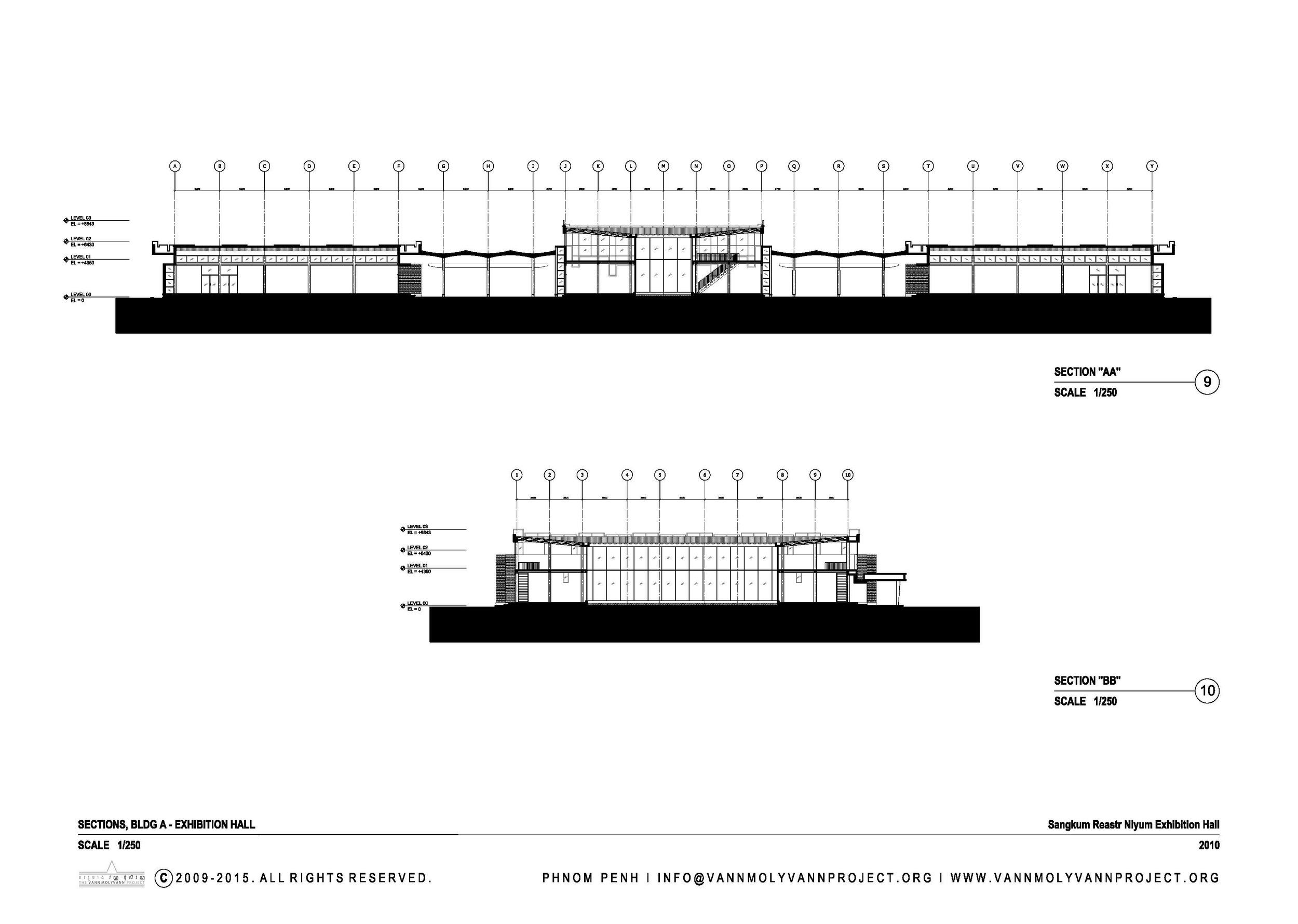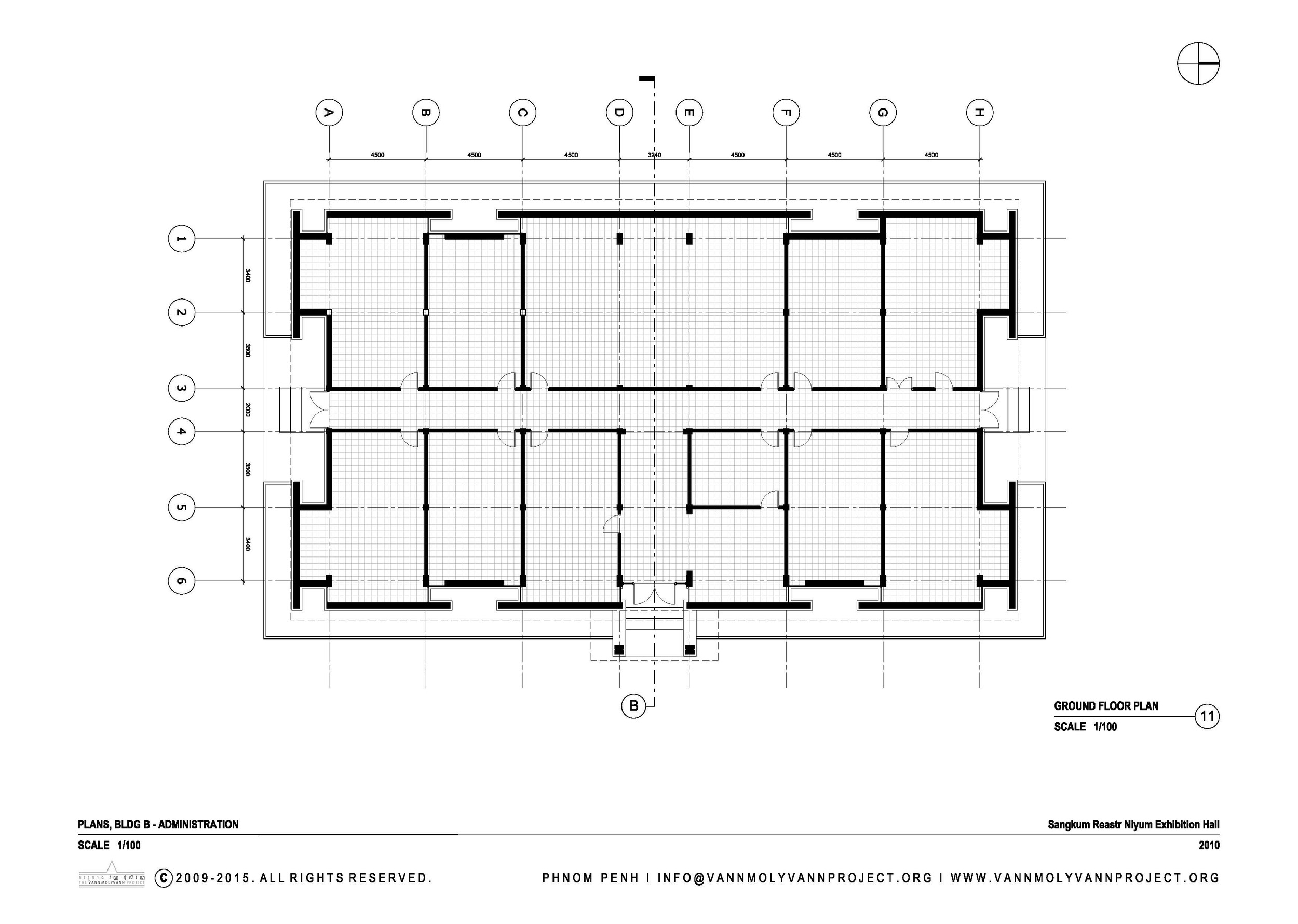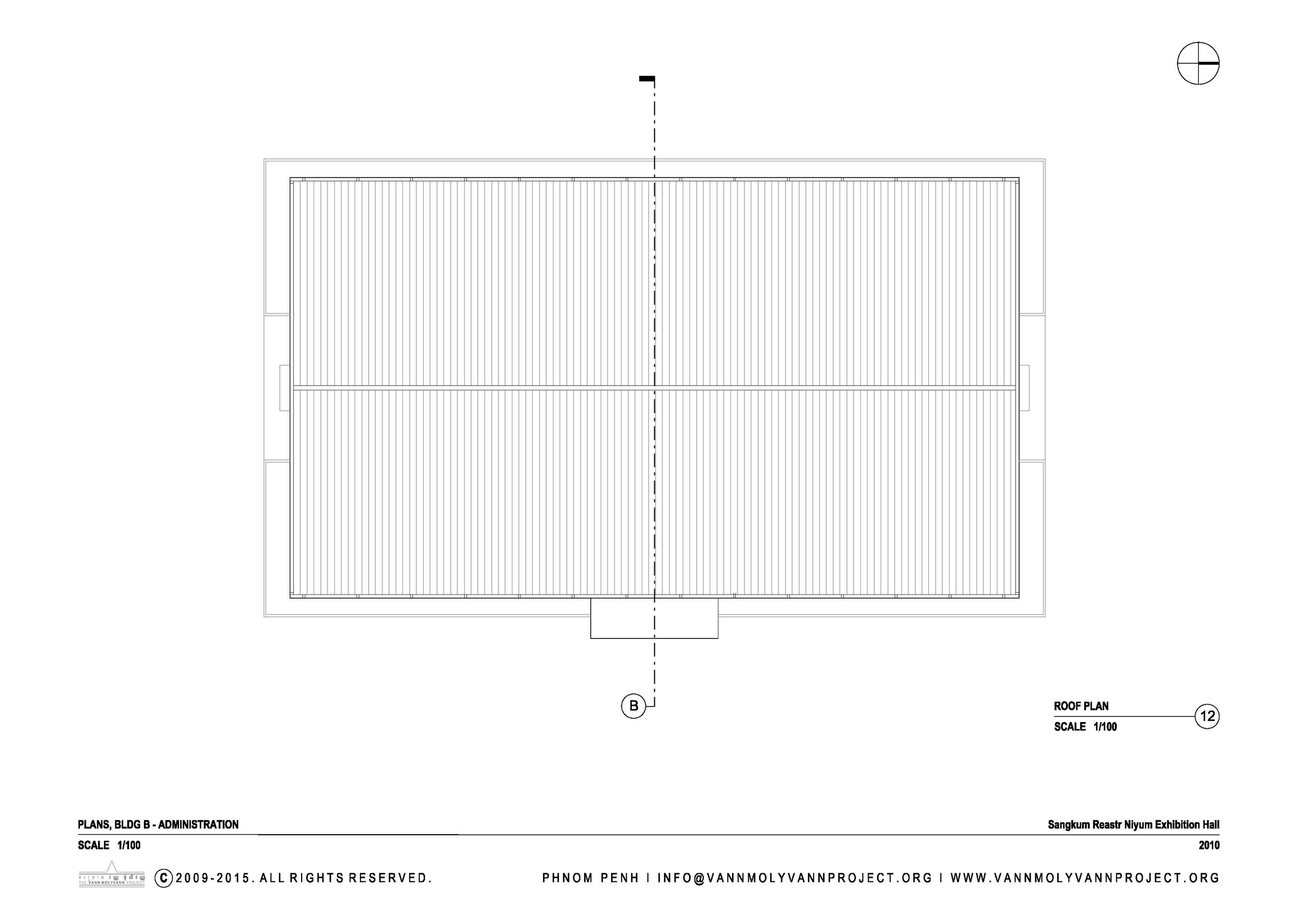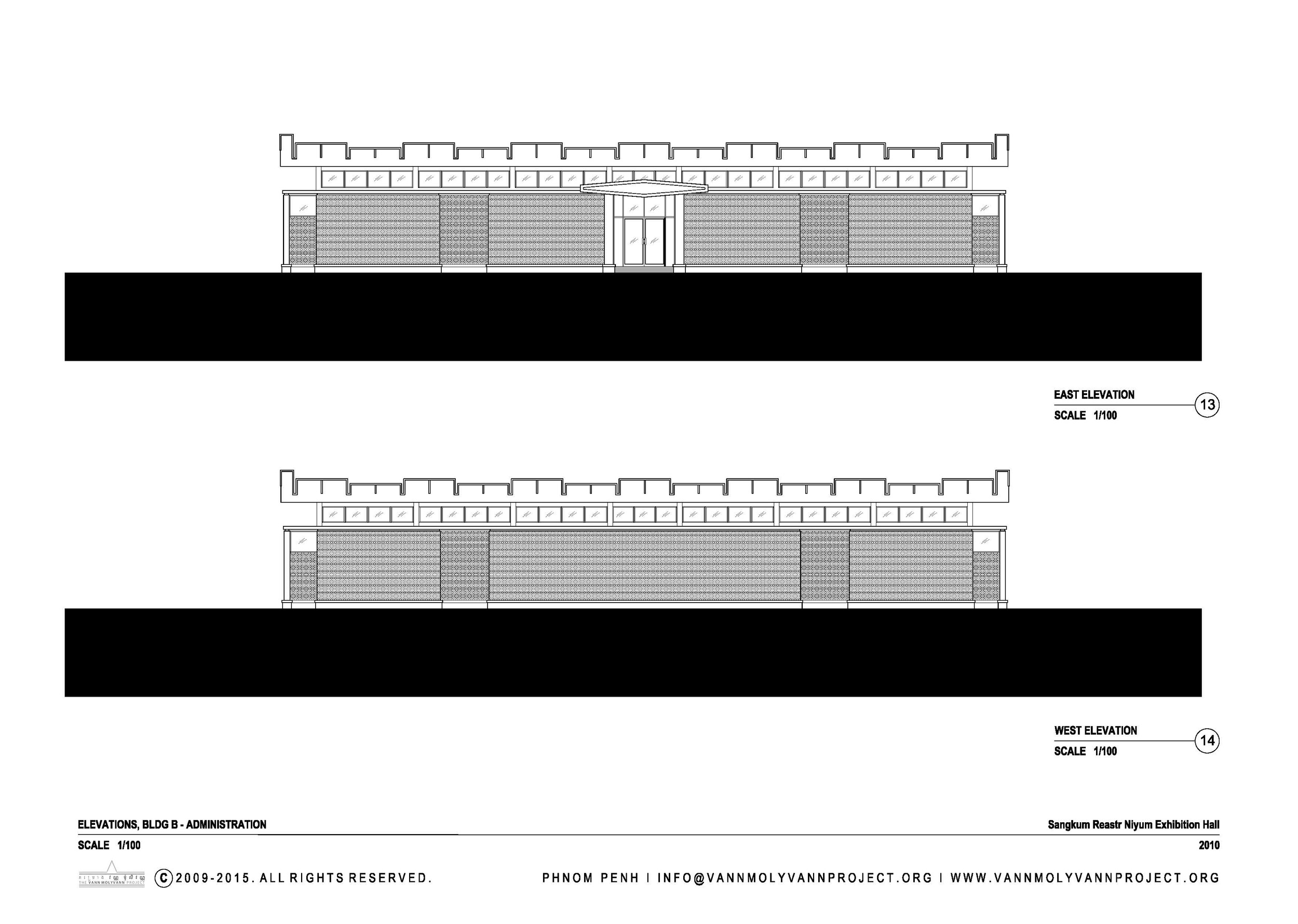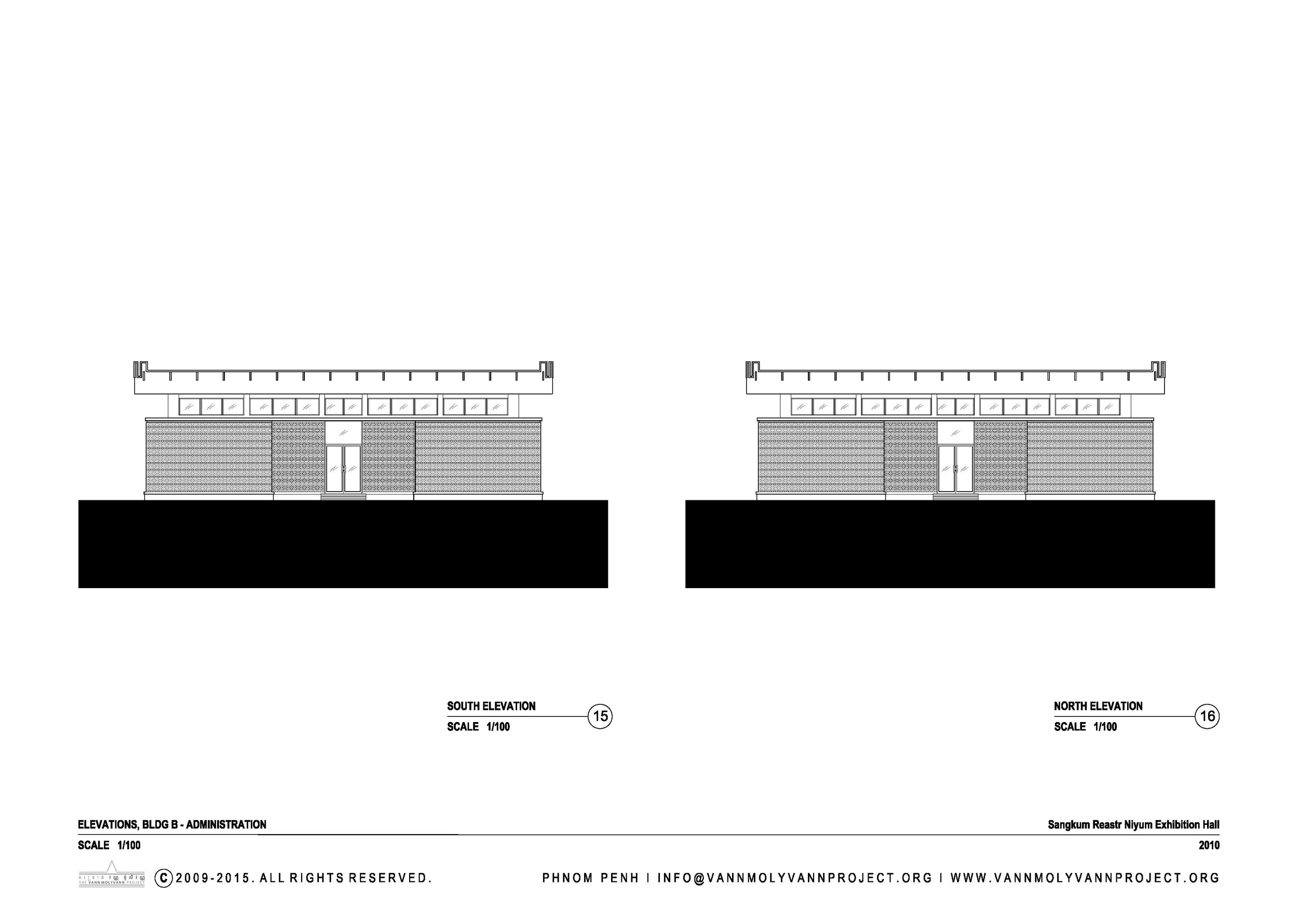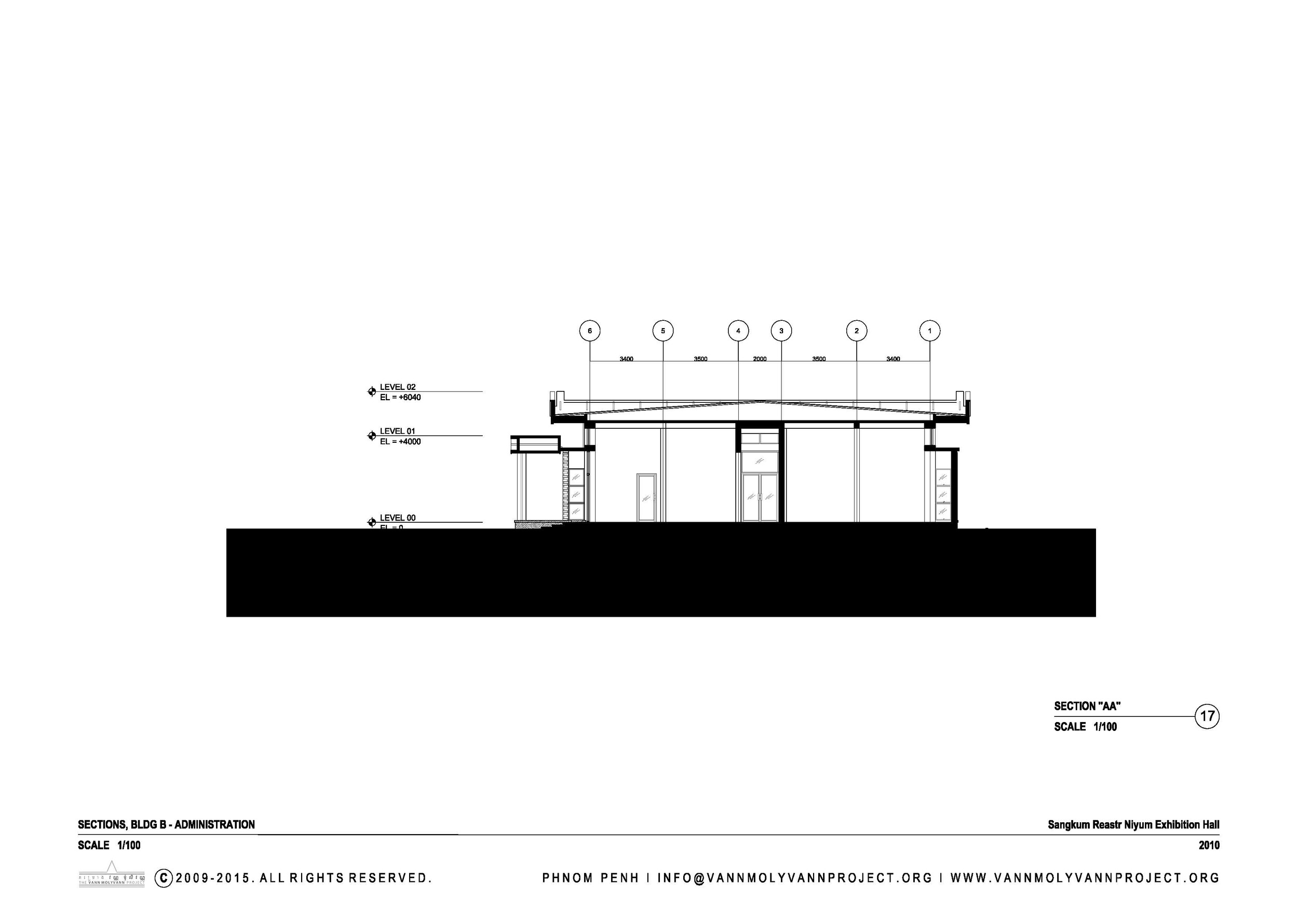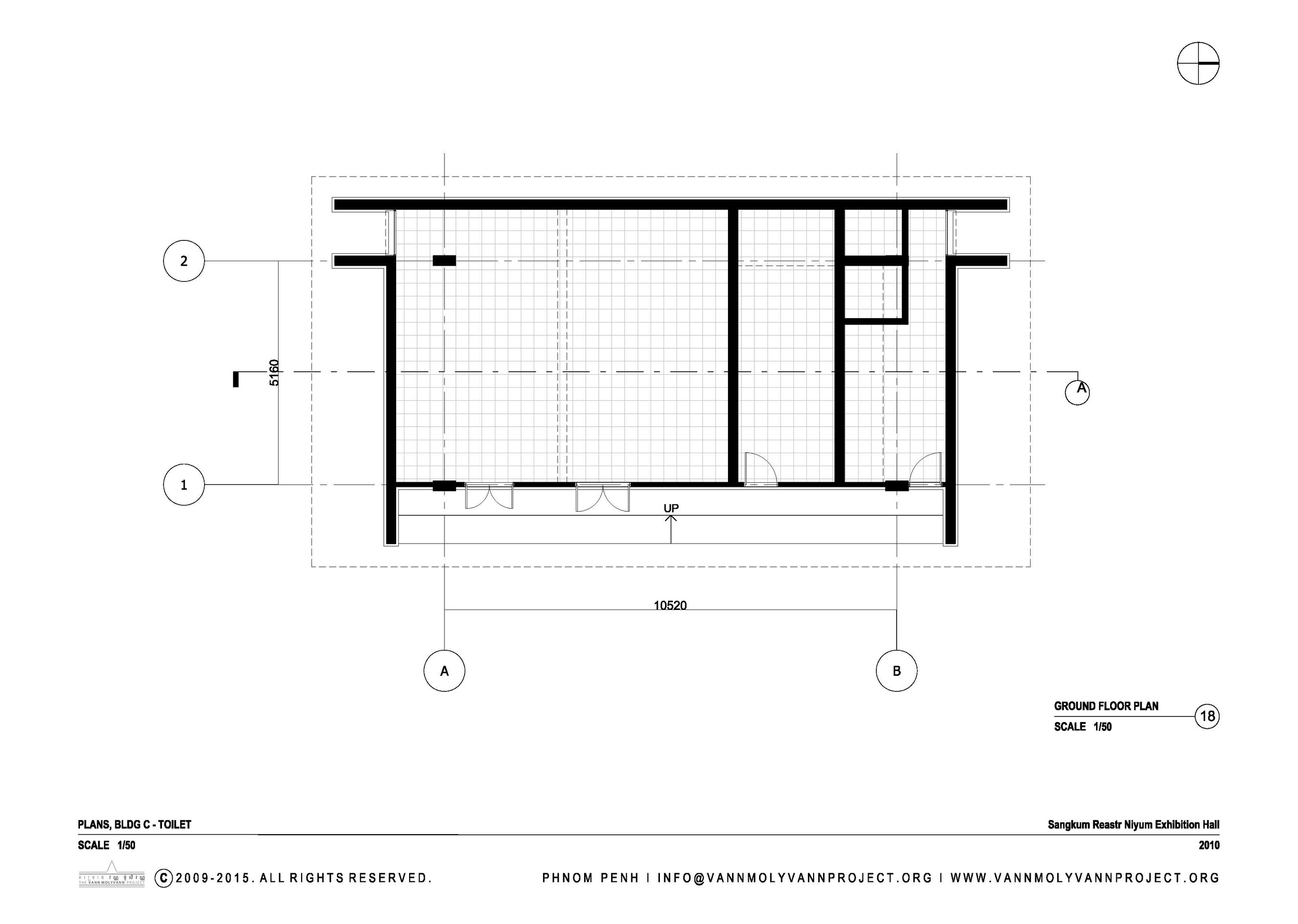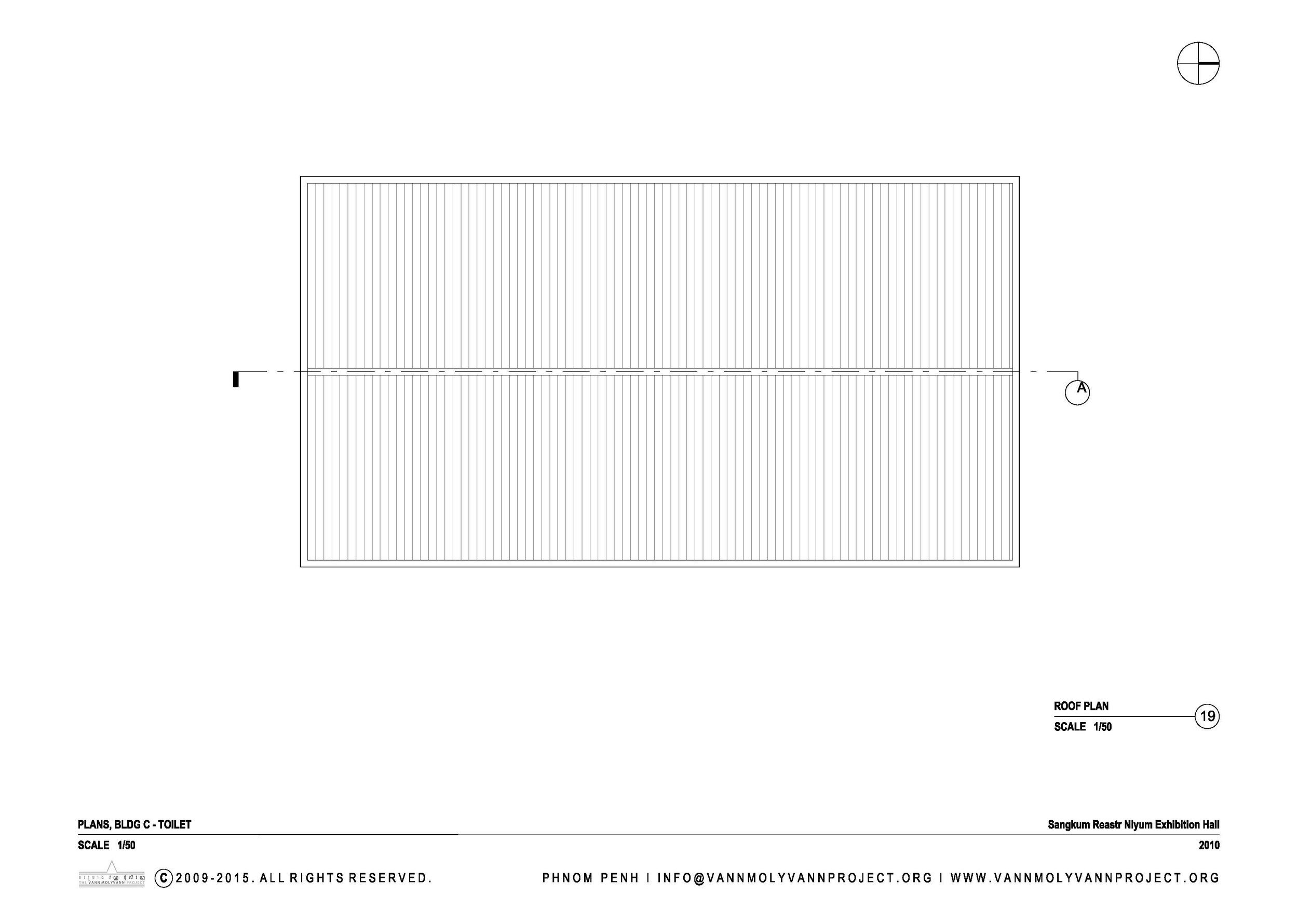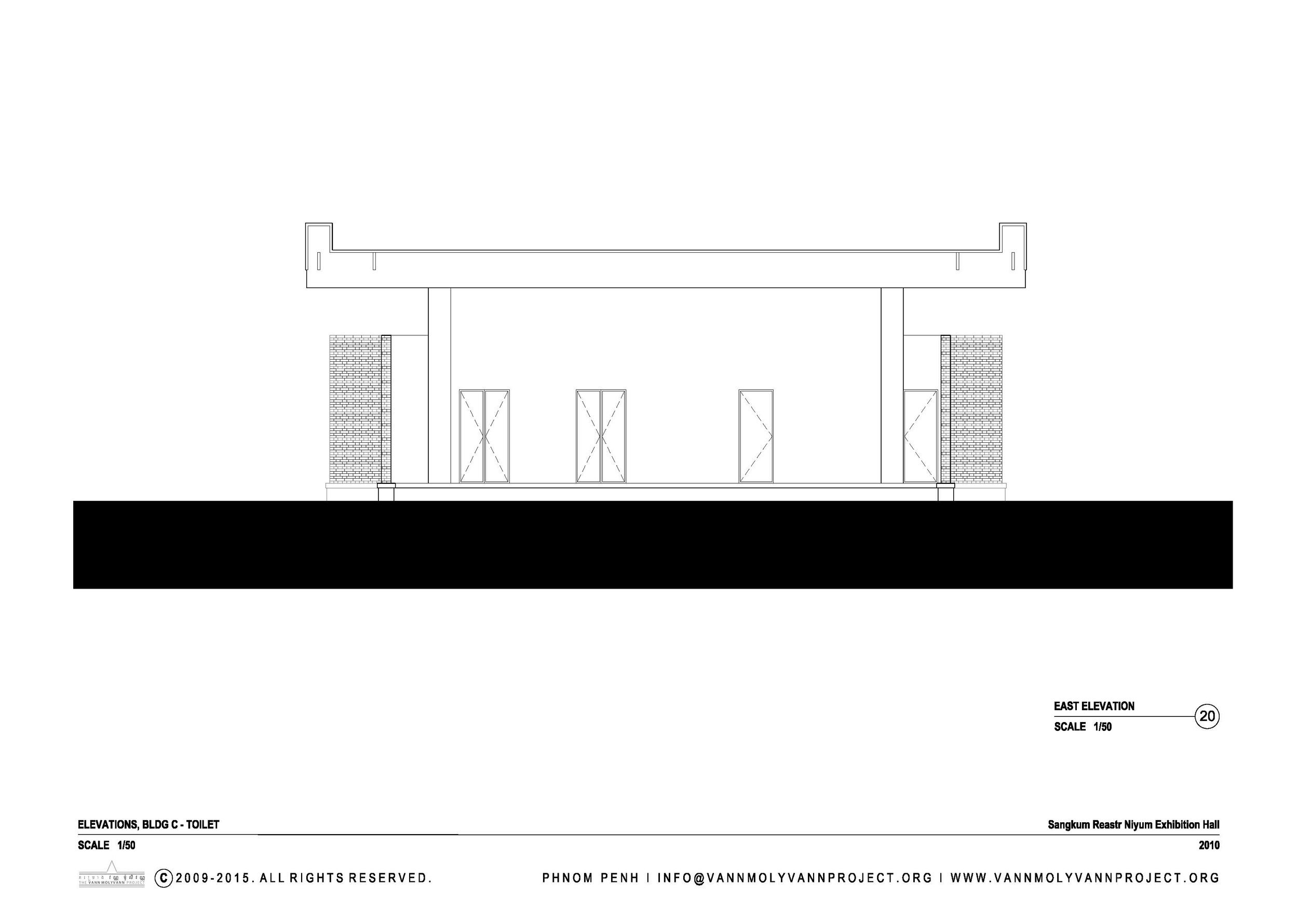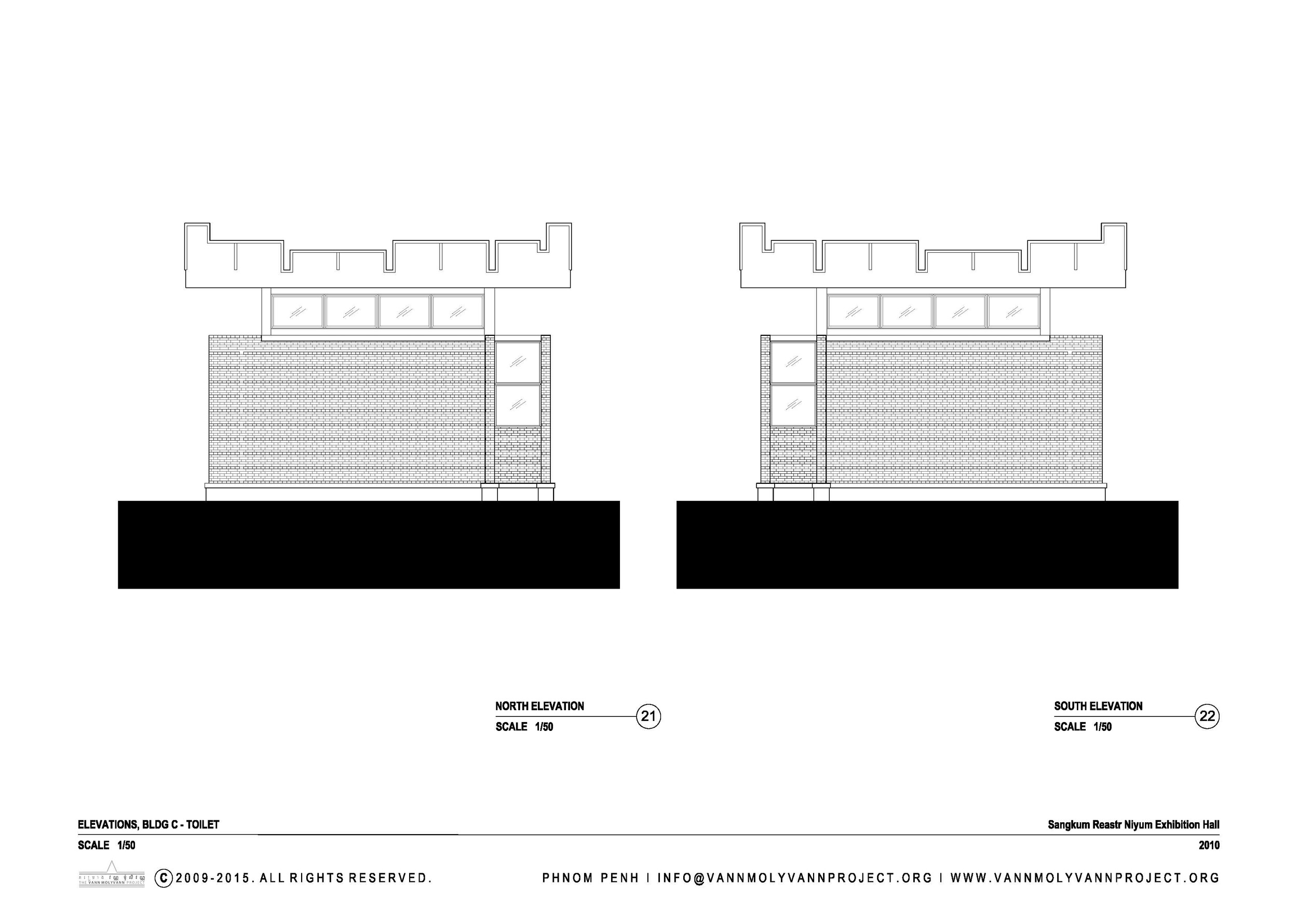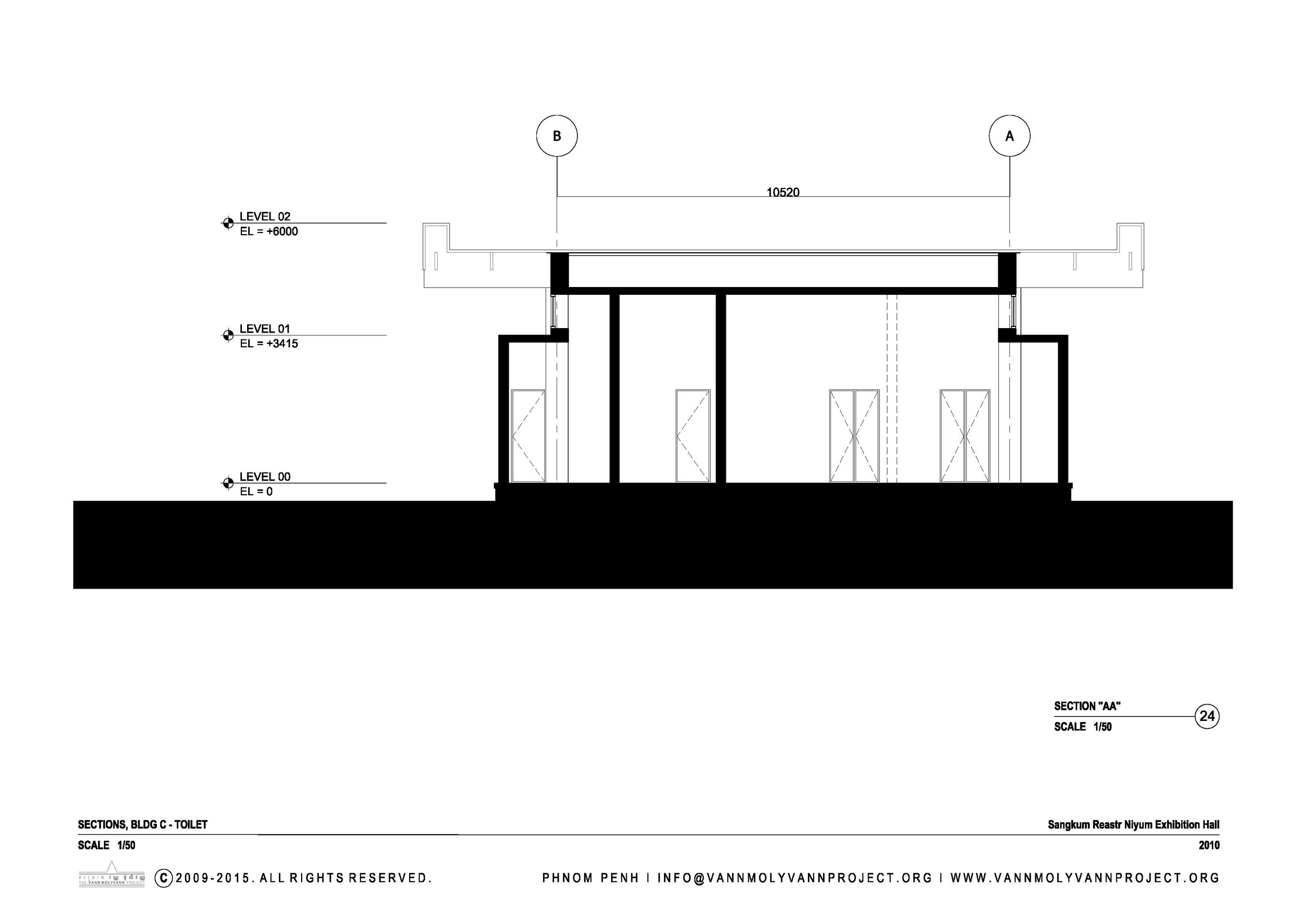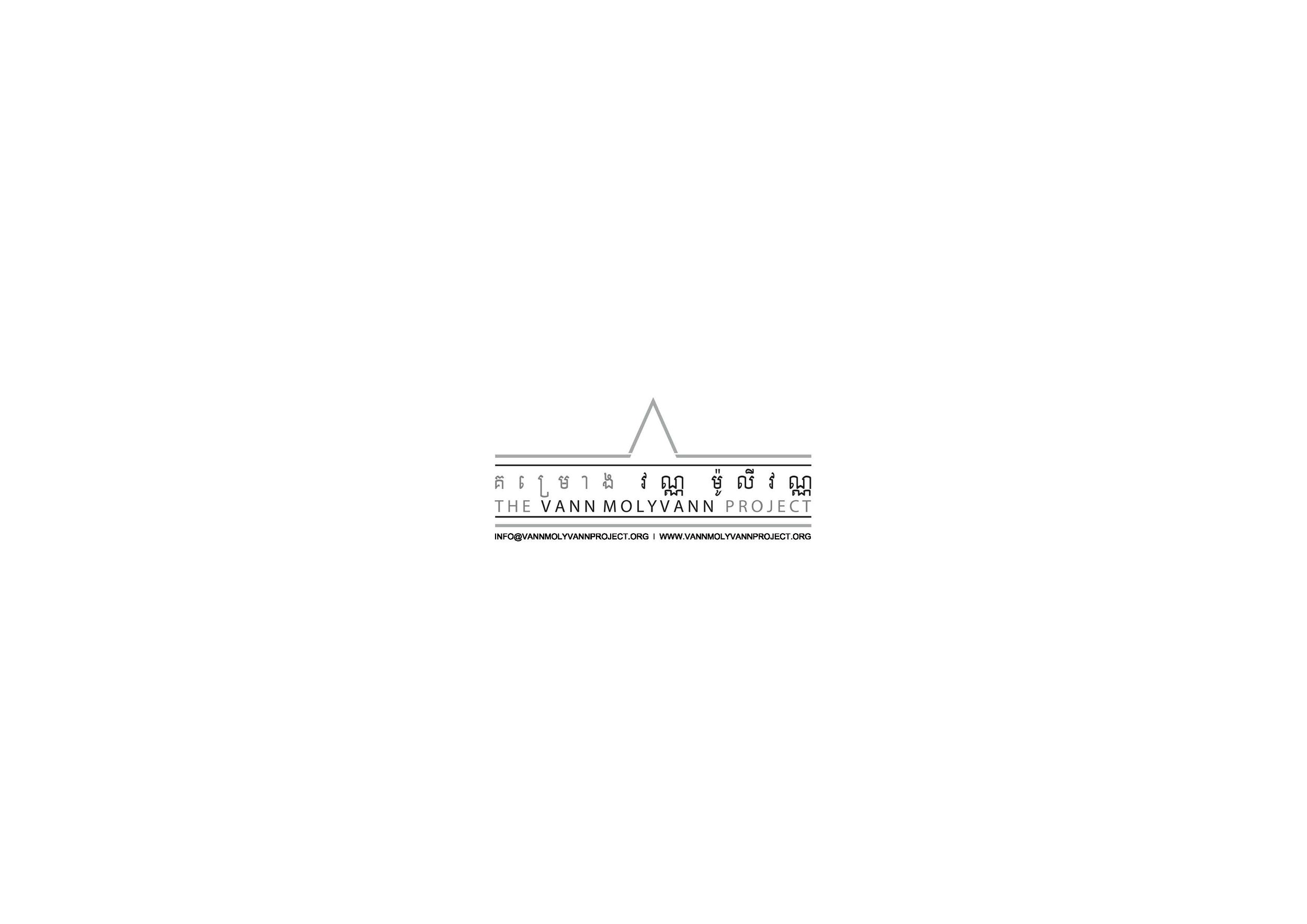Sangkum Reastr Niyum Exhibition Hall
The Sangkum Reastr Niyum Exhibition Hall was inaugurated in 1961, and was the first building to be completed in the Bassac River Front cultural complex. Designed by Vann Molyvann, the building would be one among several exhibition halls in this area of newly reclaimed land. Other structures were designed by Lu Ban Hap, Roger Colne and Seng Suntheng.
The exhibition halls were elevated less than a meter above the ground level on a flat concrete foundation. As such, the buildings allowed the taller structures nearby to dominate the skyline: these included the Grey Building, the White Building, and the Preah Suramarit National Theater. Their lowness also made the exhibition halls inviting and accessible. During openings and other events, crowds would spill out from the exhibition spaces into surrounding gardens. The exhibition halls were intended to provide educational entertainment for residents of the nearby apartment buildings, as well as for other citizens and for visitors to Cambodia.
All the exhibition halls were clad in unpainted red bricks, with windows running in a narrow horizontal band under the ceiling, as well as in vertical strips at the corners of the structure. This allowed light to enter the galleries, while preserving the maximal solid wall-space for display of artworks and other objects. Most of the exhibition halls housed temporary, rotating displays. The Sangkum Reastr Niyum Exhibition Hall, however, housed a more permanent display, which showcased the achievements of Prince Sihanouk’s Sangkum Reastr Niyum (People’s Socialist Community) regime in newly independent Cambodia, including cultural as well as industrial and agricultural materials. Visiting international politicians were brought to see this display, and their visits were also filmed for commemorative documentaries.
The roof of the Sangkum Reastr Niyum Exhibition Hall was white-painted concrete rising to shallow peaks, supported by square-shaped white concrete columns. The other exhibition halls boasted flat roofs with very slight parapets. These varying structures together emphasized the structures’ lowness to the flat land.
The Sangkum Reastr Niyum Exhibition Hall has been extensively renovated and is no longer in use. Although most of the other structures have been destroyed, several exhibition halls remain more or less intact. Only one is used for something resembling its original purpose, presently housing the Ministry of Culture and Fine Arts’ Kite Museum, opposite the National Assembly of Cambodia building.
